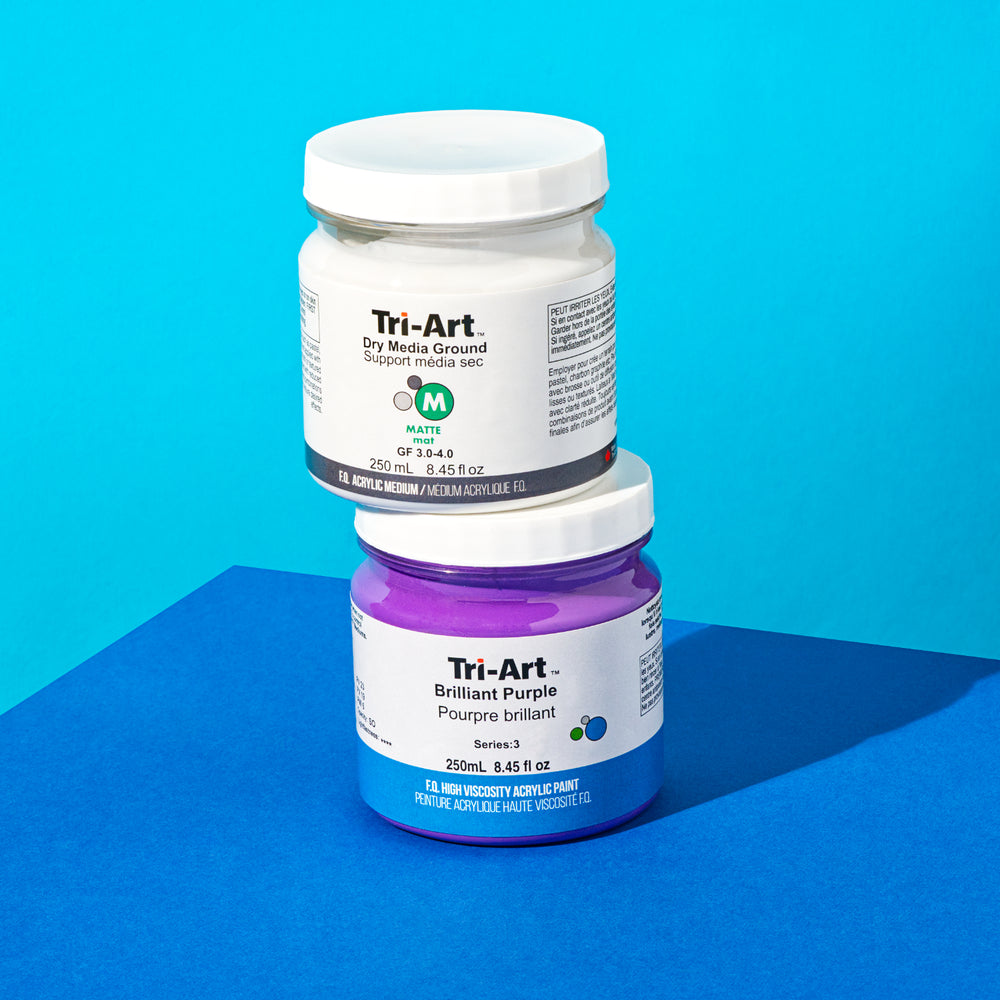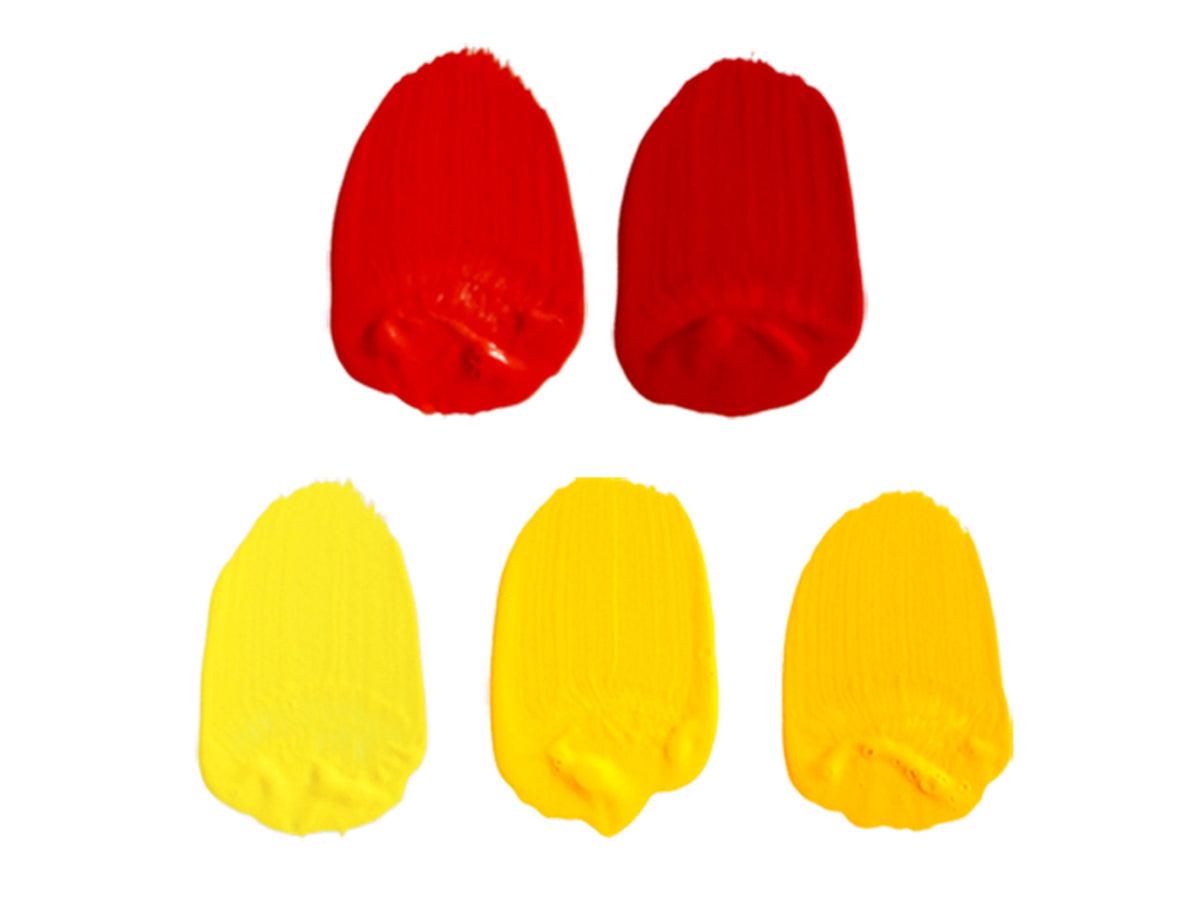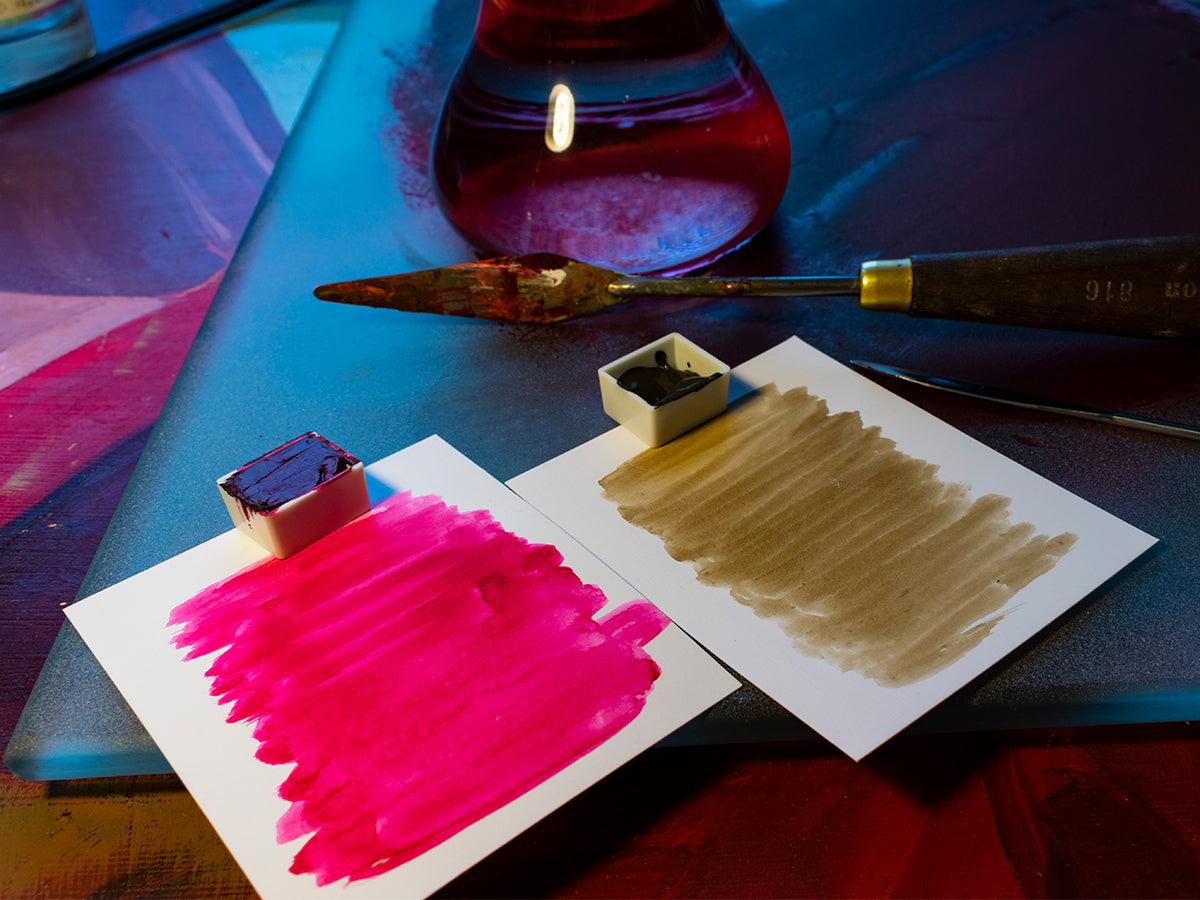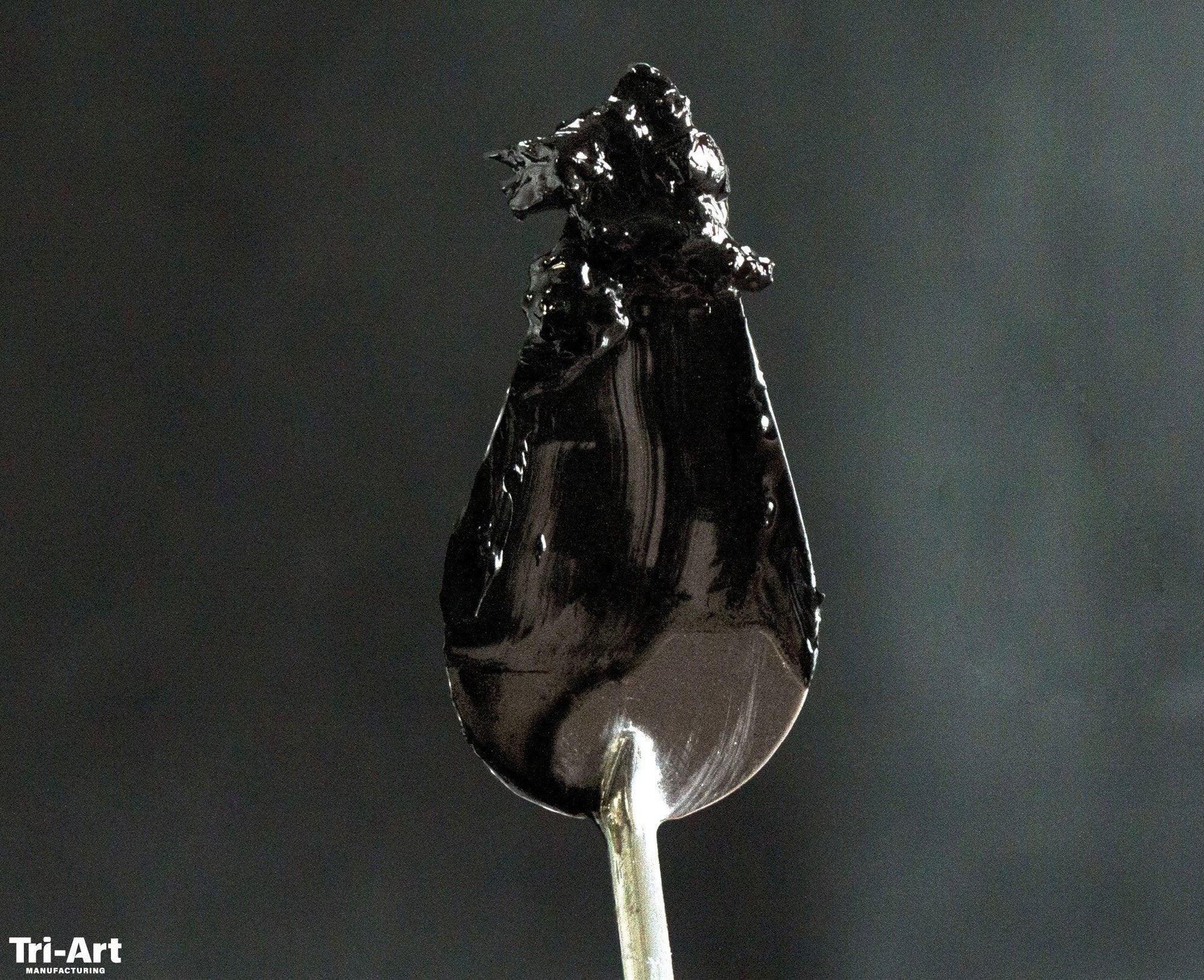Painters today are offered a considerable breadth of choices when selecting paints. It’s easy to become overwhelmed. We might default to using the pigments our instructors taught us to use or those we have simply used for many years. The wide accessibility and relative affordability of so many pigments is nothing short of modern miracle, sustained on by a global system of trade and manufacture. Rather than fear the long shelves of unfamiliar pigments I hope I can convince you that these options are often solutions to our artistic aims.
Those new to painting may search ‘essential paint colours’ and find most lists include some variation of cadmium yellow and red. These are the iconic, bright, opaque colours that have been loaded onto painters’ palettes for nearly two centuries now. Today’s article makes the case for cadmium’s post-modern ancestors, bismuth yellow and pyrrole red. Where did these pigments come from and why should you choose them instead of cadmium colours?
HEAVY HITTERS: A HISTORY OF CADMIUM PIGMENTS
Although they may seem firmly historical, heavy metal cadmium pigments (red, yellow and orange) actually have somewhat recent history, but certainly one that has made a prolific splash. The critical elements of these iconic colours, cadmium and selenium, were not discovered until 1817.[1] When the German metallurgist Friedrich Stromeyer discovered cadmium in 1817, he immediately recommended his brightly yellow coloured cadmium sulphide compound for use as an artist’s pigment. It would take the work of another chemist, the Swedish Jöns Jacob Berzelius, with his discovery of selenium, to make orange and red shades of cadmium with the addition cadmium selenide to Stromeyer’s cadmium yellow.[2] Cadmium pigments now also contain a portion of zinc sulphide which in combination with yellow cadmium sulphide which yields cool, light hues of colour like cadmium yellow primrose.[3]

Shop Tri-Art's chemically pure acrylic cadmium colours:
Cadmium pigments appears as early as 1829 in oil paintings in France and Germany but were slow to take off. Cadmium pigments were not commercially available until 1840[4] with a very limited supply of raw materials - to this day there are no readily accessible sources of cadmium and selenium, and so these components must be processed out of other mining waste. [5] Scarcity persisted throughout the 19th century with one first-hand account from 1888 noting cadmium yellow as “a perfect colour if not so expensive.” [6]
Despite their cost, these pigments gained popularity for their enduring colour, especially in the heavily polluted air of 19th century coal-burning cities.[7] They found use in oils and watercolours, where small amounts of the costly pigments could be appreciated. The famous colours of the Impressionists certainly owe a great dept to the bright, opaque shades of cadmium colours that added chroma to their a la prima palettes. Monet’s works have been extensively documented to contain cadmium yellow, as seen in the warm yellow hues of Bordighera (1884).[8]

Shop the palette:
The 1920s brought the industrialization of cadmium pigments. It was discovered that cadmium colours could be extended with inexpensive lithopone filler while still remaining colourful and opaque. With this, cadmiums became one of these most important commercial pigments, still being produced in mass quantities to this day. [9] Quality artists’ paints continued to use unadulterated cadmium colours to capitalize on the vibrancy of these pigments, but at a premium cost. The ubiquitous nature of these colours on nearly any painter’s palette is a testament to their beloved working qualities, and perhaps lack of alternatives.
BISMUTH AS USUAL? THE LONG HISTORY OF A POST-MODERN YELLOW
You may be familiar with bismuth metal in its crystallized state, an impossibly geometric and prismatic structure, commonly sold in shops. While these are modern synthetic crystals, bismuth as a white metal was known to the ancients and found use in artworks as early as the 15th century. The metallic quality of bismuth meant it could be utilized as an economical substitute for silver, most commonly found as a powdered pigment for illuminating of manuscripts or oil paintings.[10] The pigment was likely more grey than metallic, with a slight lustre similar to metal-point drawings or modern graphite. Painters like Francesco Granacci (1469–1543) may have tried to utilize this lustrous quality when painting metallic surfaces like the armour in Portrait of a Man in Armour (ca. 1510). Modern analysis found the grey to be bismuth based.[11]


Metallic bismuth as a pigment does not appear to have gained wide traction in history, and only in the 20th century was the metal explored for its colorful possibilities. Beginning in the 1960s the spectral effect of bismuth crystals was capitalized on in the form of a nail polish additive - bismuth oxychloride was utilized as a replacement for naturally pearlescent materials.[12] Contemporary bismuth yellow pigments were only introduced to market in 1985 after many decades of experimentation.[13]

Bismuth Yellow (labeled PY184 on artists paints) is a mixture of two metal oxides, bismuth vanadate and bismuth molybdate. Bismuth vanadate was first synthetized in 1924 for pharmaceutical purposes. In 1976 DuPont began developing this compound as a pigment. They described their bismuth vanadate as ‘brilliant primrose yellow.’ Mixed metal oxide version of vanadate and molybdenum were later synthesized, giving rise to warmer orange-red shades.[14] Tri-Art offers shades from light to deep, similar to shades of cadmium yellow. Approximately 900 tonnes of bismuth yellow are now produced annually, [15] largely for industrial, outdoor applications due to its outstanding lightfastness.
PYRROLE REDS: A FIERY FUTURE
Pyrrole red is a relatively new pigment – it was first synthesized in 1974 by accident. [16] Despite its infancy, many of us will have encountered this pigment in everyday life, the pigment has become widely used in automobile paints, plastics and cosmetic formulations (labeled CI 56110).[17],[18]

When pyrrole red was first synthesised, the accidental biproducts had enticing properties as pigments: highly insoluble, highly stable, and intensely red in colour. The product had an incredibly high chroma red colour due to their synthetic, high purity.[19] The pigment was first introduced as Irgazin DPP in the 1980s by Ciba-Geigy.[20] It now comes in a range of hues from orange to bluish-red.[21] Tri-Art offers pyrrole red light and medium in similar shades to cadmium reds.
MODERN VS. POST-MODERN PIGMENTS: WHICH ARE BETTER?
Cadmium pigments are considered staple of the serious painter’s palette – intensely opaque, they offer great colour coverage and tinting strength, especially when mixing with titanium white. However, cadmium colours have always been cost prohibitive and will continue to be so due to the scarcity of available cadmium and selenium on earth. Cadmium pigments also have record of causing problems for painters and conservators. In their 19th century infancy cadmium pigments were particularly unreliable; contaminants left over from the processing of cadmium pigments from raw ore could cause disastrous deteriorations to painted surfaces in just a few decades. Many 19th century paintings with once bright, richly saturated yellows now appear bleached white, cloudy, or chalky in appearance. Several cases show the opposite effect too, with mixtures of cadmium yellow and other pigments like chrome yellow and the famous Emerald Green (composed of deathly toxic arsenic) inciting reactions that markedly darken the paint film. It really took the improvements of 20th century chemistry to bring us chemically pure cadmium pigments that were consistently stable in the 1940s.[22]
Despite finding stability in chemically pure formulations, cadmium pigments remain problematic because of their heavy metal nature. Toxicological and environmental impacts are something that every painter should consider when deciding if they want to use these pigments. Because of these issues, pyrrole red and bismuth yellow are often suggested as replacements for these pigments. Pyrrole red is nearly just as opaque as cadmium red, intensely red, outstandingly light-fast, and non-toxic. [23] Because of its safety profile, the pigment is safe enough to be used in tattooing, cosmetics and all paint formulations. Unlike cadmium colours, post-modern pigments like pyrrole red and bismuth yellow can found in liquid and spray paints – cadmium colours, in contrast, should not be sprayed to avoid any inhalation.
Bismuth yellow is similarly non-toxic, with a very high opacity, and an intense yellow colour. Although a metal oxide, it appears that bismuth yellow is an environmentally conscious choice with impact studies noting virtually no risk to human or aquatic life.[24] Bismuth yellow also has excellent lightfastness, being used extensively for outdoor applications.[25] Like cadmium pigments, bismuth yellow is an expensive pigment, owing to the cost of raw materials. Like cadmium, bismuth is somewhat scarce and therefore can only be sourced as a biproduct of mining other metals.[26]
Pyrrole red has the additional advantage of coming in a range of not only shades, but also transparency. Unlike cadmium colours, the particle size of pyrrole red can be manipulated to make transparent and opaque formulations. Painters may be more familiar with this colour than they think – transparent pyrrole red has been used to create the red filter of RGB type LCD screens.[27] Although these screens project colour rather than reflecting it as in a painting, modern artists may find they can reproduce the high chroma colours we see every day through our screens more faithfully using contemporary pyrrole pigments versus muddier cadmium colours. Transparent pyrrole reds are additionally more lightfast than many other transparent reds that are used to formulate colours like alizarin crimson.


Advantages of Pyrrole Reds:
- Pyrrole red is non-toxic, and more ecologically friendly than cadmium colours.
- Despite its price point, the very high tinting strength of Pyrrole red allows this colour to go very far – Tri-Art’s high quality, highly pigmented, professional formulations further ensure you get the most pigment and colour possible.
- Pyrrole colours are the closest alternative to cadmium colours rather than cadmium hues currently on the market.[28] Hue colours must balance an accessible cost with replicating the hue of another pure pigment. If you are looking to replace heavy metal pigments like cadmiums from your palette at a professional level – pyrrole is the best choice.
- Pyrrole red creates cleaner secondary colours, less warm and muddy than cadmiums. Its high chroma also competes better with other high chroma colours like phthalo blue and high tinting colours like titanium white.
- Pyrrole red has options for opaque and transparent variations – if you can become familiar with its colour properties you can readily extend your working palette to transparent reds rather than reaching for other hues of red.
Advantages of Bismuth Yellows:
- Bismuth yellow is more ecologically friendly than cadmium colours and non-toxic.
- Like pyrrole red, bismuth yellow creates cleaner secondary colours. It readily produces more neutral greens than cadmium yellow that tends to make yellow and warm shaded greens.
- Last year Tri-Art introduced a newly modified bismuth pigment which improved grinding and dispersing for their bismuth yellow acrylic paint. The new pigment creates a paint with higher gloss, greater chroma and saturation, and requires a less energy intensive process to create.
MODERN PIGMENTS FOR THE TRADITIONAL PAINTER?
By now all but the traditionalist painter might be convinced of these contemporary pigments. But for those who would like to replicate the works of the past, I would offer one last thought. Many historical pigments were once quite bright and vibrant, but have fallen from use due to their instability (tendency to fade or deteriorate in other ways) and more importantly their toxicity. Thankfully no longer available, Emerald Green was one such pigment. A bight, acidic green, made from arsenic, it doubled as rat poison. Today we are quite lucky to enjoy a range of non-toxic pigments that can replace these colours. Even if you aim is to paint like Van Gogh, Monet or Degas - painters we might typify by 19th century cadmium colours - I would highly suggest you consider more modern pigments like pyrrole red and bismuth yellow. The real benefit to using these pigments is the wider range of colours can mix while retaining vibrancy and saturation. Consider trying them for your next project.


When to reach for cadmium reds and yellows:
Despite their drawbacks, cadmium colours will continue to hold an important place in the painters’ palette. For the contemporary painters looking to evaluate their painting practice you may want to consider using cadmium colours for the follow purposes:
- Trying to replicate a historical palette (note that many historical colours are not available due to their toxicity or fugitive nature)
- Opacity is critical (pyrrole red and bismuth yellow are slightly less opaque than cadmium colours)
- You are looking to achieve a palette that is warm or low in chroma while keeping colour mixtures minimal
- For those on a budget, cadmium hue colours can be explored too. However, these will be most useful for those who paint straight from the tube, without extensive colour mixing.
BIBLIOGRAPHY
Abel, A, ‘Pigments of the Industrial Revolution’, in Colour Design - Theories and Applications, ed. by Best Janet, 2nd Editio (Cambridge: Elsevier, 2017), pp. 572–74
Berrie, Barbara H, ‘Rethinking the History of Artists’ Pigments Through Chemical Analysis’, Annual Review of Analytical Chemistry, 5.1 (2012), 441–59 <https://doi.org/10.1146/annurev-anchem-062011-143039>
Buxbaum, Gunter, ed., ‘Bismuth Pigments’, in Industrial Inorganic Pigments, Wiley Online Books (Weinheim: Wiley, 1998), pp. 113–16 <https://doi.org/https://doi.org/10.1002/9783527612116.ch3>
Čechák, Tomáš, Tomáš Trojek, Radka Šefců, Štěpánka Chlumská, Anna Třeštíková, Marek Kotrlý, and others, ‘The Use of Powdered Bismuth in Late Gothic Painting and Sculpture Polychromy’, Journal of Cultural Heritage, 16.5 (2015), 747–52 <https://doi.org/10.1016/j.culher.2014.12.004>
Dunning, Paul, ‘Cadmium Pigments’, High Performance Pigments, Wiley Online Books, 2009, pp. 13–26 <https://doi.org/https://doi.org/10.1002/9783527626915.ch3>
Endriss, Hartmut, ‘Bismuth Vanadates’, in High Performance Pigments, Wiley Online Books, 2009, pp. 7–12 <https://doi.org/https://doi.org/10.1002/9783527626915.ch2>
Fiedler, Inge, and Michael Bayard, ‘Cadmium Yellows, Oranges and Reds’, in Artists’ Pigments: A Handbook of Their History and Characteristics, ed. by Robert L Feller (Washington DC: National Gallery of Art, Washington DC, United States, 1986), p. pp.65-108
Greening, Timothy, ‘Metamerism in Colour Mixtures Containing Cadmium Red and Pigment Red 254’ (Queens University, 2013)
Krüger, Joachim, Peter Winkler, Eberhard Lüderitz, Manfred Lück, and Hans Uwe Wolf, ‘Bismuth, Bismuth Alloys, and Bismuth Compounds’, Ullmann’s Encyclopedia of Industrial Chemistry, Major Reference Works, 2003 <https://doi.org/https://doi.org/10.1002/14356007.a04_171>
Lewis, Peter A., ‘Colorants: Organic and Inorganic Pigments’, in Color for Science, Art and Technology, ed. by Kurt. Nassau, Azimuth ; v. 1. (Amsterdam ; Elsevier, 1998), pp. 283–312
Lomax, Suzanne Quillen, and Tom Learner, ‘A Review of the Classes, Structures, and Methods of Analysis of Synthetic Organic Pigments’, Journal of the American Institute for Conservation, 45.2 (2006), 107–25 <http://www.tandfonline.com/doi/abs/10.1179/019713606806112540>
Wallquist, Olof, and Roman Lenz, ‘Diketopyrrolopyrrole (DPP) Pigments’, High Performance Pigments, Wiley Online Books, 2009, pp. 165–94 <https://doi.org/https://doi.org/10.1002/9783527626915.ch11>
FOOTNOTES
[1] A Abel, ‘Pigments of the Industrial Revolution’, in Colour Design - Theories and Applications, ed. by Best Janet, 2nd Editio (Cambridge: Elsevier, 2017), pp. 572–74.
[2] Paul Dunning, ‘Cadmium Pigments’, High Performance Pigments, Wiley Online Books, 2009, pp. 13–26 <https://doi.org/https://doi.org/10.1002/9783527626915.ch3>.
[3] Abel.
[4] Inge Fiedler and Michael Bayard, ‘Cadmium Yellows, Oranges and Reds’, in Artists’ Pigments: A Handbook of Their History and Characteristics, ed. by Robert L Feller (Washington DC: National Gallery of Art, Washington DC, United States, 1986), p. pp.65-108.
[5] Dunning.
[6] Fiedler and Bayard.
[7] Dunning.
[8] Fiedler and Bayard.
[9] Fiedler and Bayard.
[10] Tomáš Čechák and others, ‘The Use of Powdered Bismuth in Late Gothic Painting and Sculpture Polychromy’, Journal of Cultural Heritage, 16.5 (2015), 747–52 <https://doi.org/10.1016/j.culher.2014.12.004>.
[11] Barbara H Berrie, ‘Rethinking the History of Artists’ Pigments Through Chemical Analysis’, Annual Review of Analytical Chemistry, 5.1 (2012), 441–59 <https://doi.org/10.1146/annurev-anchem-062011-143039>.
[12] Peter A. Lewis, ‘Colorants: Organic and Inorganic Pigments’, in Color for Science, Art and Technology, ed. by Kurt. Nassau, Azimuth ; v. 1. (Amsterdam ; Elsevier, 1998), pp. 283–312.
[13] Lewis.
[14] ‘Bismuth Pigments’, in Industrial Inorganic Pigments, ed. by Gunter Buxbaum, Wiley Online Books (Weinheim: Wiley, 1998), pp. 113–16 <https://doi.org/https://doi.org/10.1002/9783527612116.ch3>.
[15] Hartmut Endriss, ‘Bismuth Vanadates’, in High Performance Pigments, Wiley Online Books, 2009, pp. 7–12 <https://doi.org/https://doi.org/10.1002/9783527626915.ch2>.
[16] Olof Wallquist and Roman Lenz, ‘Diketopyrrolopyrrole (DPP) Pigments’, High Performance Pigments, Wiley Online Books, 2009, pp. 165–94 <https://doi.org/https://doi.org/10.1002/9783527626915.ch11>.
[17] Suzanne Quillen Lomax and Tom Learner, ‘A Review of the Classes, Structures, and Methods of Analysis of Synthetic Organic Pigments’, Journal of the American Institute for Conservation, 45.2 (2006), 107–25 <http://www.tandfonline.com/doi/abs/10.1179/019713606806112540>.
[18] Wallquist and Lenz.
[19] Wallquist and Lenz.
[20] Lomax and Learner.
[21] Wallquist and Lenz.
[22] Fiedler and Bayard.
[23] Wallquist and Lenz.
[24] Endriss.
[25] Lewis.
[26] Joachim Krüger and others, ‘Bismuth, Bismuth Alloys, and Bismuth Compounds’, Ullmann’s Encyclopedia of Industrial Chemistry, Major Reference Works, 2003 <https://doi.org/https://doi.org/10.1002/14356007.a04_171>.
[27] Wallquist and Lenz.
[28] Timothy Greening, ‘Metamerism in Colour Mixtures Containing Cadmium Red and Pigment Red 254’ (Queens University, 2013).




